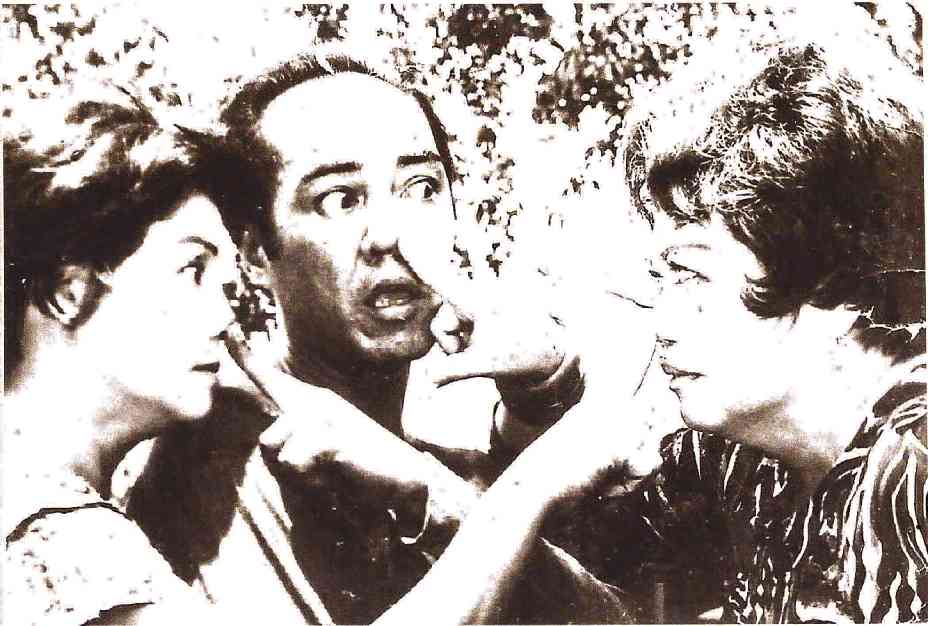On my way home from work at the Sampaguita Studio in the mid-’60s, I would often make a stop-over at a small store in Project 8 of Quezon City where the road led to the gate of GSIS Village.
It was adjacent to where my friend, Lillian Laing de Leon, resided but we hardly met. No matter what time of day or night I would pass by, the store remained open for me to pick up my ration of hot pan de sal for my children to feast on the moment I arrived home.
Once, I mentioned it to Lillian, and she was tickled pink to know that I was one of their regular customers. She couldn’t attend to the store because she was busy with her stage performances and also appearing as a comedienne on the movie screen.
We were about the same age, so we compared notes: her husband was a lawyer, while mine was an architect; they had two children, a boy and a girl, while my husband, Vic, and I had six—five boys and a girl.
“Five boys!” she shrieked and made a face that evoked laughter from those around us. “Boy, that’s a lot of pan de sal!” she commented, and I retorted, “Now you know why I cannot go home empty-handed!”
I liked Lillian because she did not make much of her being a popular comedienne—she was “just folks” to us.
She did well in her first movie, “Sa Libis ng Nayon” in 1958 where she was billed as Lillian de Leon, and it was followed immediately by her next assignment, “Baby Bubut.” This second film turned out to be a disappointment for her.
She moped around trying to find the answers, but she found no solution to her devastation except to blame herself. Then, she decided to go back, change her screen name to Lillian Laing, and it remained that way for the rest of her career.
Favorite
“Sa Libis ng Nayon” was her favorite and its theme song was the one she always hummed to herself (Kung ang hanap mo ay ligaya sa buhay/ Sa libis ng nayon, doon manirahan).
When she agreed to appear in the musical film, “Lawiswis Kawayan” in 1960, Tony Cayado was one of her coactors, together with Gloria Romero, Nestor de Villa (courtesy of LVN), Zeny Zabala, Dolphy, Panchito and the Wing Duo.
Three years later, Cayado was promoted to director, and the picture that was assigned to him was titled “Senyorito at ang Atsay” headed by Juancho Gutierrez and Amalia Fuentes.
Lillian got a lot of ribbing but she was happy about being given what she called a “title role” by starmaker Dr. Jose R. Perez, because she was the real “atsay” in the film, not Amalia.
For the rest of the ’60s, Lillian was kept busy making pictures with Sampaguita-VP: “Sinisinta Kita,” 1963; “Paratroop Squadron,” “Mga Reynang Eng-kantada,” “Alis Diyan, Huwag Mo Akong Ligawan,” and “Papa Um Mamaw” all in 1964-65; ” Jamboree ’66 ,” “Ay, Ay Naku, Neneng,” and “Ang Lagay ’Adre, Ay Understanding,” in 1966; and “Bikini Beach Party,” “Oh, What A Kiss,” “Double Date,” and “Bus Stop” in 1967. Her last two movies with Sampaguita-VP in 1968 were “Order ni Osang” and “Bahay Kubo, Kahit Munti,” starring Rosemarie, Pepito Rodriguez, Blanca Gomez and Nora Aunor.
After the demise of Doc Perez in 1975, Lillian stopped making movies, except for a film that Marichu Vera Perez Maceda produced for Sampaguita Pictures in 1977, which was directed by Jun Gallardo, “Ano Ang Iyong Kasalanan, Rebecca Marasigan?”
